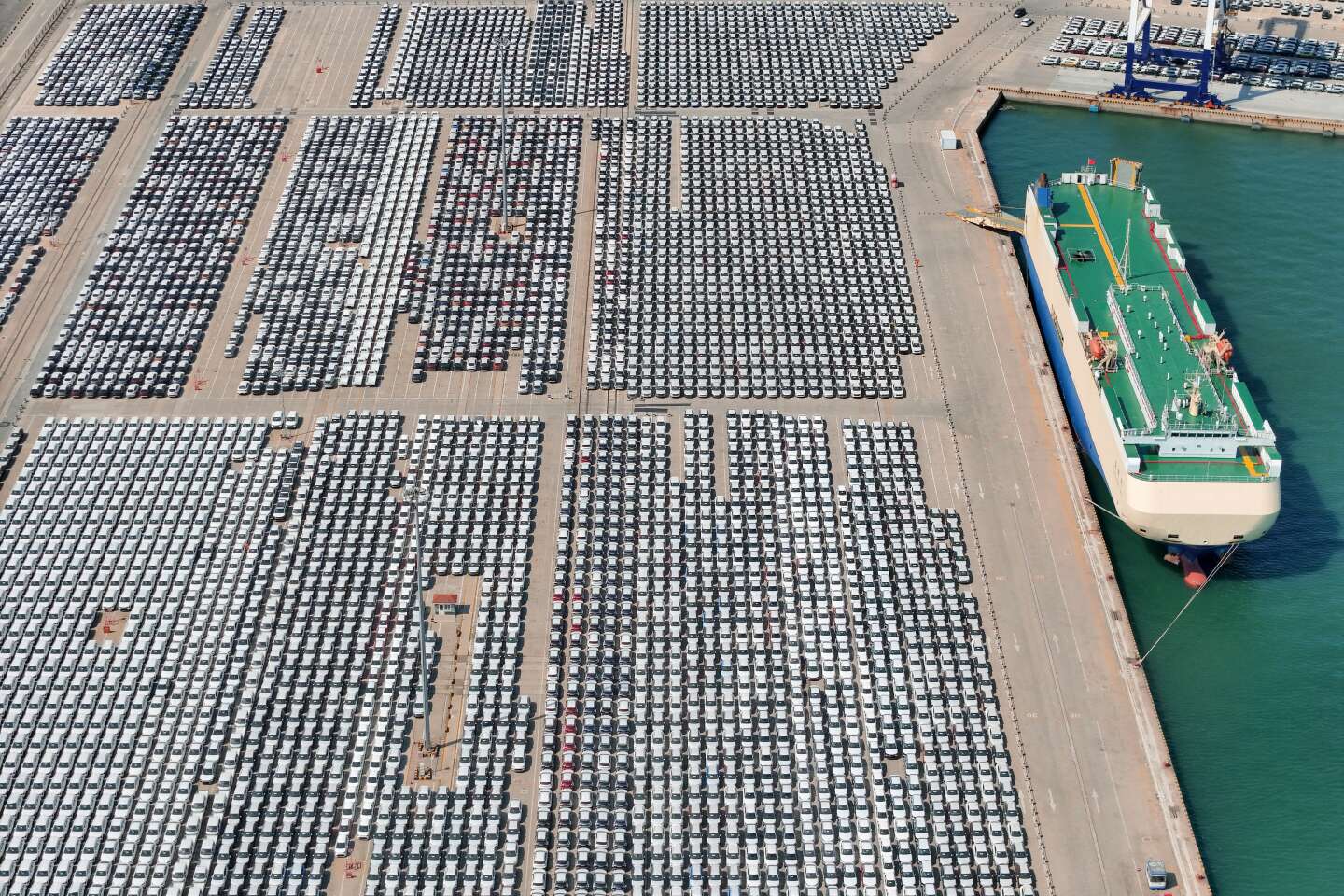Wave of Chinese Cars Floods European Market
A large number of Chinese-made cars are being gathered at Yantai Port for shipment for export in Yantai, Shandong Province, China, highlighting the challenges faced by the automobile industry in transitioning to electric vehicles. The overcapacity in the Chinese industry has flooded the European market, causing congestion at major ports such as Antwerp-Bruges in Belgium.
Challenges in Transitioning to Electric Vehicles
The emergence of Chinese competitors in the European market has caused a wave of Chinese cars to flood the region, with a dozen Chinese automakers launching a commercial offensive to export nearly 4.1 million cars by 2023, a 58% increase in one year. This influx of Chinese cars aims to conquer the European market undergoing rapid changes, especially with the availability of subsidies for electric vehicles in several countries.
Storage Issues and Congestion at European Ports
In Calloo, near Antwerp, and Zeebrugge on the North Sea coast, huge parking lots are struggling to accommodate the increasing volume of vehicles passing through the ports. In 2022, 3.4 million vehicles passed through the two ports, leading to challenges in vehicle storage and management. The European ports are anticipating between 600,000 and 1 million Chinese-made vehicles to be unloaded in 2024, adding to the congestion issue.
Impact of Chinese Cars on European Market
The Chinese wave of cars in the European market includes models from brands like MG, BYD, Nio, XPeng, Lynk & Co, Omoda, and Hongqi, among others. This influx of Chinese cars has created a commercial offensive in which both electric and internal combustion-powered vehicles are being exported to Europe. The European market is experiencing significant changes, with major brands like Tesla, BMW, and Polestar assembling vehicles in China.
Efforts to Downplay Difficulties at Ports
Despite the congestion and challenges faced by European ports like Antwerp-Bruges and Bremerhaven in Germany, port authorities and operators are striving to downplay their difficulties. Requests for interviews have gone unanswered, with companies like Wallenius Wilhelmsen in Zeebrugge and ICO in Calloo refusing to acknowledge the congestion issues. While they try to maintain a positive image, the reality of the situation is evident in the overcrowded parking lots managed by these operators.
The Future of Chinese Cars in the European Market
The influx of Chinese cars in the European market signals a shift in the automotive industry, with Chinese brands making significant inroads in a competitive market. As European consumers embrace electric vehicles and governments offer incentives for their purchase, Chinese automakers are seizing the opportunity to expand their presence in the region. The competition between traditional European automakers and Chinese brands is intensifying, leading to a dynamic and evolving market landscape.
Ringkasan
Industri otomotif sedang menghadapi tantangan besar dalam beralih ke mobil listrik. Bagaimana industri mobil China yang berlebihan telah membanjiri pasar Eropa? Sebuah kapal kargo besar dari perusahaan Norwegia Höegh Autoliners membongkar ribuan mobil di pelabuhan Antwerp, Belgia. Operator utama pelabuhan Antwerp-Bruges sekarang berhadapan dengan persaingan dari produsen mobil China. Bagaimana mereka menghadapi masalah penyimpanan mobil adalah tantangan utama saat ini.
Pasar mobil Eropa mengalami perubahan cepat dengan terjunnya produsen mobil China seperti MG, BYD, Nio, XPeng, dan lainnya. Mereka berusaha menaklukkan pasar Eropa dengan target produk sebanyak 4.1 juta mobil pada tahun 2023. Bagaimana pendapat Anda tentang tren mobil China yang semakin mendominasi pasar Eropa? Apakah Anda lebih tertarik dengan mobil listrik dari China atau merek Jerman tradisional? Ayo berikan pendapat Anda!
Sumber berita silahkan Cek di sini Source link . jangan lupa baca berita/artikel terkait melalui link di bawah. dan silahkan cek artikel otomotif dari otomotif.autos sekarang di : artikel otomotif
